| View previous topic :: View next topic |
| Author |
Message |
luisalegria


Joined: 07 Mar 2008
Posts: 6627
Location: San Francisco, USA
Expire: 2018-01-18
|
 Posted: Wed Oct 22, 2008 6:21 am Post subject: Mirage (Korean make) 200/3.5 M42 - thanks Peter ! Posted: Wed Oct 22, 2008 6:21 am Post subject: Mirage (Korean make) 200/3.5 M42 - thanks Peter ! |
 |
|
luisalegria wrote:
Peter (member peterqd) sent me this very curious and rather handsome lens from England -
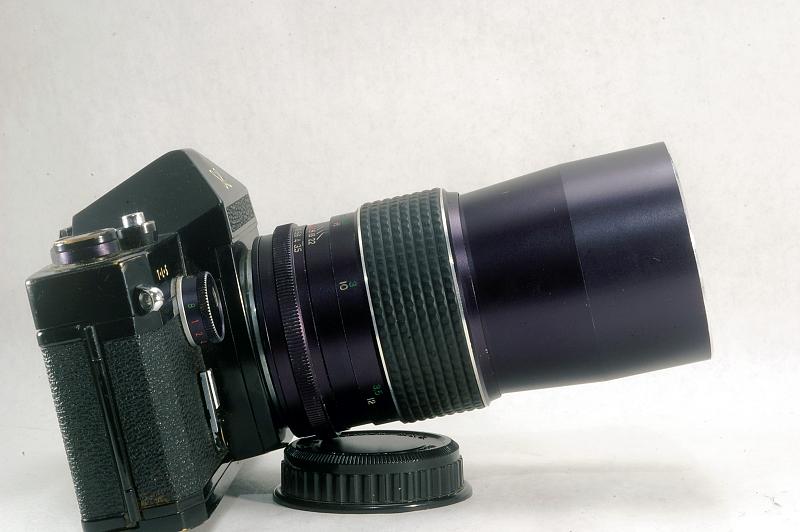
Its a "Mirage" which is certainly a merchants trademark. After some examination it was found to have a tiny "Made in Korea" by the lens mount, so obviously its not a Japanese product. I had to open the thing to switch it to manual operation (I just put an aluminum tube over the inside portion of the stop-down pin, to keep the internal mechanism depressed), and the design reminded me a lot of Sigmas of the period, almost certainly mid-late 1970's, but possibly into the 1980's - there were still screw mount cameras being made in the 1980's !
The maker may be any of the Korean Chaebol (trading/industrial conglomerates), perhaps the ancestor of Samyang/Phoenix. The Koreans typically copied or licensed a Japanese design (and they are still at it). I did recently see a late model Kominar 135, in Fujica bayonet, which had a very close stylistic resemblance to this. Komine seems to have supplied a lot of lenses in Fujica mount just before they gave up on the consumer lens business. Perhaps Komine licensed its designs to a Korean company ? If so, it was in the 1980's, as the Fujica bayonet was introduced in 1980.
In any case, this is a very conventional M42 auto-only lens without any aperture linkages or other fripperies, obviously something intended for the cheap end of the SLR market. Given that, its quite honestly and solidly made. There is a problem with this one as it does not give infinity focus confirm on my K100D, but seems to with my other Pentaxes. Perhaps its just barely short of infinity ?
Performance is mixed. It is quite soft wide open, the sort of dreamy portrait effect is quite easy to get at f/3.5 with this one, if thats what you're looking for. By f/5.6 it is quite sharp. This is one of those lenses that seems to snap quickly into focus with the K100. I don't understand why some lenses are easier to focus than others, but its so. This one is certainly easy to work with. It has no vices otherwise, though contrast isn't as high as some.
These first three are at f/3.5 - most of the rest are at f/8 or so.

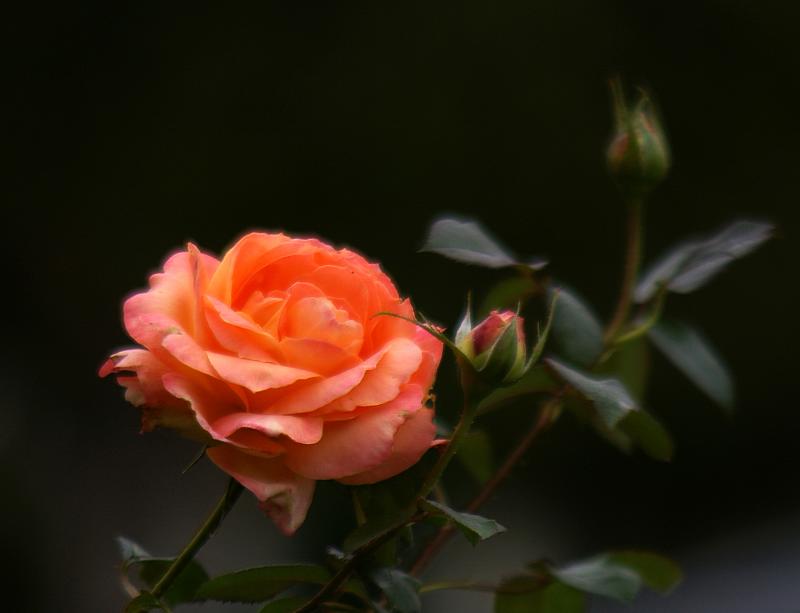




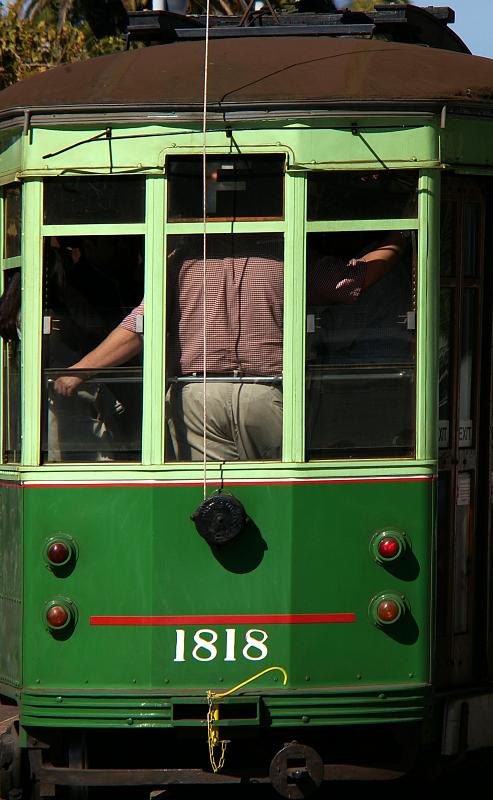

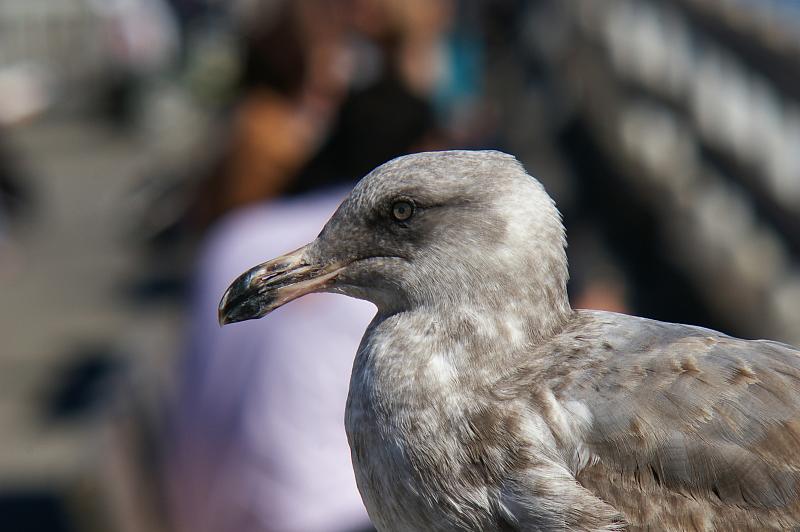
The bird -

crop -
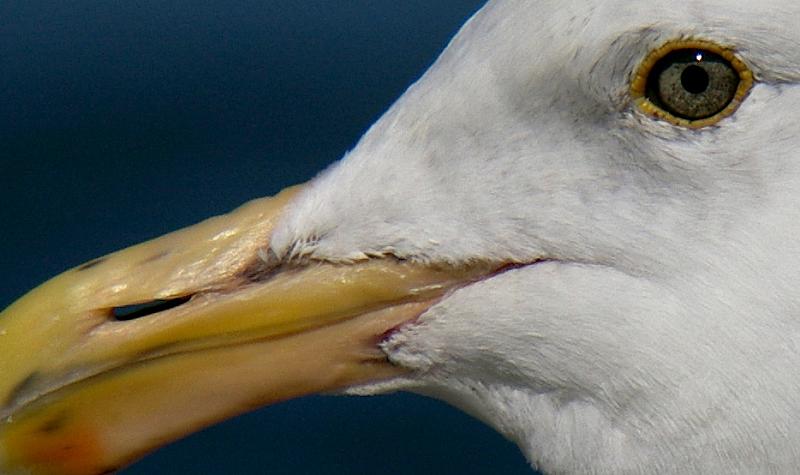
_________________
I like Pentax DSLR's, Exaktas, M42 bodies of all kinds, strange and cheap Japanese lenses, and am dabbling in medium format/Speed Graphic work. |
|
| Back to top |
|
 |
yalcinaydin


Joined: 20 May 2008
Posts: 825
Location: Izmir, Turkey
|
 Posted: Wed Oct 22, 2008 7:28 am Post subject: Posted: Wed Oct 22, 2008 7:28 am Post subject: |
 |
|
yalcinaydin wrote:
Quite sharp at f:8.
Fast snapping into focus is a really interesting thing 
_________________
My name is "Yalcin", and exactly "Yal�ın" and here you can find my MF samples:
http://www.flickr.com/photos/yalcinaydin/sets/
Right now switching back to AF because of work needs but I still love the MF lenses  |
|
| Back to top |
|
 |
LucisPictor


Joined: 26 Feb 2007
Posts: 17633
Location: Oberhessen, Germany / Maidstone ('95-'96)
Expire: 2013-12-03
|
 Posted: Wed Oct 22, 2008 9:24 am Post subject: Posted: Wed Oct 22, 2008 9:24 am Post subject: |
 |
|
LucisPictor wrote:
It seems that even "noname" lenses can have their own character.
This 200 produces sharp pics when stopped down and a kind of dreamy soft effect when wide open. I like that.
If you about this, you can use it.
_________________
Personal forum activity on pause every now and again (due to job obligations)!
Carsten, former Moderator 
Things ON SALE
Carsten = "KAPCTEH" = "Karusutenu" | T-shirt?.........................My photos from Emilia: http://www.schouler.net/emilia/emilia2011.html
My gear: http://retrocameracs.wordpress.com/ausrustung/
Old list: http://forum.mflenses.com/viewtopic.php?t=65 (Not up-to-date, sorry!) | http://www.lucispictor.de | http://www.alensaweek.wordpress.com |
http://www.retrocamera.de |
|
| Back to top |
|
 |
peterqd


Joined: 28 Feb 2007
Posts: 7448
Location: near High Wycombe, UK
Expire: 2014-01-04
|
 Posted: Wed Oct 22, 2008 9:35 am Post subject: Posted: Wed Oct 22, 2008 9:35 am Post subject: |
 |
|
peterqd wrote:
Wow, Luis, I want it back!  Seriously, I knew if anybody could get any decent pictures from this lens, you could. We hardly ever have enough light to use f8 Seriously, I knew if anybody could get any decent pictures from this lens, you could. We hardly ever have enough light to use f8  Seems to have quite a nice bokeh too. Seems to have quite a nice bokeh too.
_________________
Peter - Moderator |
|
| Back to top |
|
 |
patrickh


Joined: 23 Aug 2007
Posts: 8551
Location: Oregon
Expire: 2011-11-18
|
 Posted: Wed Oct 22, 2008 5:05 pm Post subject: Posted: Wed Oct 22, 2008 5:05 pm Post subject: |
 |
|
patrickh wrote:
Luis I swear you could make the proverbial bottle behave well
patrickh
_________________
DSLR: Nikon D300 Nikon D200 Nex 5N
MF Zooms: Kiron 28-85/3.5, 28-105/3.2, 75-150/3.5, Nikkor 50-135/3.5 AIS // MF Primes: Nikkor 20/4 AI, 24/2 AI, 28/2 AI, 28/2.8 AIS, 28/3.5 AI, 35/1.4 AIS, 35/2 AIS, 35/2.8 PC, 45/2.8 P, 50/1.4 AIS, 50/1.8 AIS, 50/2 AI, 55/2.8 AIS micro, 55/3.5 AI micro, 85/2 AI, 100/2,8 E, 105/1,8 AIS, 105/2,5 AIS, 135/2 AIS, 135/2.8 AIS, 200/4 AI, 200/4 AIS micro, 300/4.5 AI, 300/4.5 AI ED, Arsat 50/1.4, Kiron 28/2, Vivitar 28/2.5, Panagor 135/2.8, Tamron 28/2.5, Tamron 90/2.5 macro, Vivitar 90/2.5 macro (Tokina) Voigtlander 90/3.5 Vivitar 105/2.5 macro (Kiron) Kaleinar 100/2.8 AI Tamron 135/2.5, Vivitar 135/2.8CF, 200/3.5, Tokina 400/5,6
M42: Vivitar 28/2.5, Tamron 28/2.5, Formula5 28/2.8, Mamiya 28/2.8, Pentacon 29/2.8, Flektogon 35/2.4, Flektogon 35/2.8, Takumar 35/3.5, Curtagon 35/4, Takumar 50/1.4, Volna-6 50/2.8 macro, Mamiya 50/1.4, CZJ Pancolar 50/1,8, Oreston 50/1.8, Takumar 50/2, Industar 50/3.5, Sears 55/1.4, Helios 58/2, Jupiter 85/2, Helios 85/1.5, Takumar 105/2.8, Steinheil macro 105/4.5, Tamron 135/2.5, Jupiter 135/4, CZ 135/4, Steinheil Culminar 135/4,5, Jupiter 135/3.5, Takumar 135/3.5, Tair 135/2.8, Pentacon 135/2.8, CZ 135/2.8, Taika 135/3.5, Takumar 150/4, Jupiter 200/4, Takumar 200/4
Exakta: Topcon 100/2.8(M42), 35/2.8, 58/1.8, 135/2.8, 135/2.8 (M42), Kyoei Acall 135/3.5
C/Y: Yashica 28/2.8, 50/1.7, 135/2.8, Zeiss Planar 50/1.4, Distagon 25/2.8
Hexanon: 28/3.5, 35/2.8, 40/1.8, 50/1.7, 52/1.8, 135/3.2, 135/3.5, 35-70/3.5, 200/3.5
P6 : Mir 38 65/3.5, Biometar 80/2.8, Kaleinar 150/2.8, Sonnar 180/2.8
Minolta SR: 28/2.8, 28/3.5, 35/2.8, 45/2, 50/2, 58/1.4, 50/1.7, 135/2.8, 200/3.5
RF: Industar 53/2.8, Jupiter 8 50/2
Enlarg: Rodagon 50/5,6, 80/5,6, 105/5.6, Vario 44-52/4, 150/5.6 180/5.6 El Nikkor 50/2,8,63/2.8,75/4, 80/5,6, 105/5.6, 135/5.6 Schneider 60/5.6, 80/5.6, 80/4S,100/5.6S,105/5.6,135/5.6, 135/5.6S, 150/5.6S, Leica 95/4 |
|
| Back to top |
|
 |
Attila


Joined: 24 Feb 2007
Posts: 57849
Location: Hungary
Expire: 2025-11-18
|
 Posted: Wed Oct 22, 2008 5:15 pm Post subject: Posted: Wed Oct 22, 2008 5:15 pm Post subject: |
 |
|
Attila wrote:
Louis is a gold maker...
_________________
-------------------------------
Items on sale on Ebay
Sony NEX-7 Carl Zeiss Planar 85mm f1.4, Minolta MD 35mm f1.8, Konica 135mm f2.5, Minolta MD 50mm f1.2, Minolta MD 250mm f5.6, Carl Zeiss Sonnar 180mm f2.8
|
|
| Back to top |
|
 |
asfethan


Joined: 08 Apr 2014
Posts: 74
Location: Bratislava, Slovakia
|
 Posted: Fri Apr 18, 2014 7:44 pm Post subject: Mirage Auto Reflex f3.5/200mm Posted: Fri Apr 18, 2014 7:44 pm Post subject: Mirage Auto Reflex f3.5/200mm |
 |
|
asfethan wrote:
I have propably a newer version. Numeric marks are red instead of green. I have that version you have too and if I compare front elements it looks like the newer has coating. The newer one is named Mirage Auto Reflex.
Some photos I shot today are bellow (f was between f/4 and f/5.6 but I didn't noted this info for each photo).
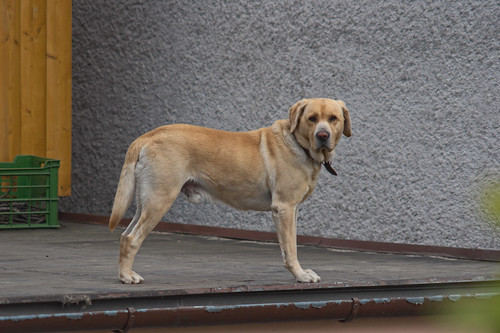
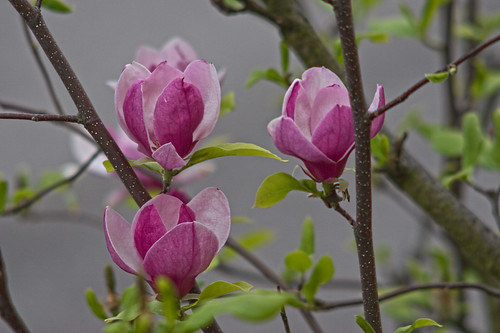
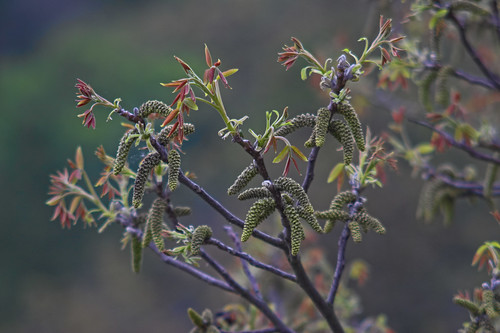
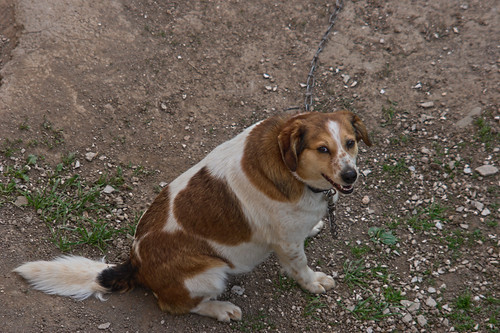
PS: I still have some troubles with MF because my K3 focusing screen is held by customs. I can't wait when it will be mounted on my DSLR and focusing became easier.
_________________
best regards, Jaroslav
flickr
camera
Pentax K10D
lenses
Hoya HMC wide-auto f2.8/28mm (PK)
Auto Chinon Multi-Coated f1.4/50mm (PK)
SMC Pentax-A f1.7/50mm (PK)
Porst Tele MC auto D f2.8/135mm (M42)
Hoya HMC tele-auto f3.5/200mm (PK)
Hoya HMC zoom f4/80-200mm (PK)
software
RawTherapee
Gimp
|
|
| Back to top |
|
 |
luisalegria


Joined: 07 Mar 2008
Posts: 6627
Location: San Francisco, USA
Expire: 2018-01-18
|
 Posted: Fri Apr 18, 2014 10:51 pm Post subject: Posted: Fri Apr 18, 2014 10:51 pm Post subject: |
 |
|
luisalegria wrote:
I have a split image screen for my K30 now, but to tell the truth it does not help very much.
Part of the problem was perhaps unrealistic expectations. I thought it could help focus sharply where there is very shallow depth of field - such as closeups with this type of lens (200/3.5) wide open, or a 50/1.4.
The mounting requires careful adjustment of thickness of the shims, and the shallower the depth of field the more accurate the shim thickness needs to be. Worse, there is a tiny bit of variability of thickness when one snaps the screen and shim back in place, and this actually makes a difference when dealing with the DOF of a 50/1.4 closeup.
Under those circumstances the auto focus confirm is just as accurate, or inaccurate.
I was doing about as well with the old screen because I was used to it, and could almost smell when it was correct.
Maybe I should get a plain groundglass screen.
_________________
I like Pentax DSLR's, Exaktas, M42 bodies of all kinds, strange and cheap Japanese lenses, and am dabbling in medium format/Speed Graphic work. |
|
| Back to top |
|
 |
asfethan


Joined: 08 Apr 2014
Posts: 74
Location: Bratislava, Slovakia
|
 Posted: Fri Apr 18, 2014 11:14 pm Post subject: Posted: Fri Apr 18, 2014 11:14 pm Post subject: |
 |
|
asfethan wrote:
That's interesting opinion. I read a lot of "pros" about focusing screen with split circle and micro prism so I decided to obtain one because I'm using old MF lenses only. I don't have big expectations cause I expect it will help me a bit just like TENPA 1.36x magnify viewfinder. With this little pieces together I'll hope my hit-to-miss ratio will improve about 20-40%.
Can you explain me please how is ground glass working or about what is it?
_________________
best regards, Jaroslav
flickr
camera
Pentax K10D
lenses
Hoya HMC wide-auto f2.8/28mm (PK)
Auto Chinon Multi-Coated f1.4/50mm (PK)
SMC Pentax-A f1.7/50mm (PK)
Porst Tele MC auto D f2.8/135mm (M42)
Hoya HMC tele-auto f3.5/200mm (PK)
Hoya HMC zoom f4/80-200mm (PK)
software
RawTherapee
Gimp
|
|
| Back to top |
|
 |
luisalegria


Joined: 07 Mar 2008
Posts: 6627
Location: San Francisco, USA
Expire: 2018-01-18
|
 Posted: Fri Apr 18, 2014 11:43 pm Post subject: Posted: Fri Apr 18, 2014 11:43 pm Post subject: |
 |
|
luisalegria wrote:
The original screen on DSLR's and the replacement screens with split image or microprism have the rest of the screen treated to increase brightness and illuminate the screen evenly, generally some variety of fresnel. It is not truly a good projection of the image that lands on the sensor and it does not really give an image with proper areas in or out of focus.
A groundglass screen resolves a projected image much closer to what the image or film sees. It is much dimmer and not evenly illuminated - the bright area seems to move as you move your eye. Groundglass is what was traditionally used for focusing on large format cameras and early SLR's, like Exaktas.
On MF or LF cameras often a fresnel is added to the groundglass (stacked on top) to brighten it and even the illumination, but of course this is harder to do on a DSLR screen. Some old 35mm screens, like on Exaktas, were curved to even the illumination. But Exakta type screens are too thick to use as replacements on DSLRs. A plain groundglass would be worth trying I think.
_________________
I like Pentax DSLR's, Exaktas, M42 bodies of all kinds, strange and cheap Japanese lenses, and am dabbling in medium format/Speed Graphic work. |
|
| Back to top |
|
 |
asfethan


Joined: 08 Apr 2014
Posts: 74
Location: Bratislava, Slovakia
|
 Posted: Fri Apr 18, 2014 11:54 pm Post subject: Posted: Fri Apr 18, 2014 11:54 pm Post subject: |
 |
|
asfethan wrote:
Hmm, this thing is very interesting for me. Thanks for the explanation. Last part to resolve is where can I get some ground glass screen for my Canon EOS 20D.
_________________
best regards, Jaroslav
flickr
camera
Pentax K10D
lenses
Hoya HMC wide-auto f2.8/28mm (PK)
Auto Chinon Multi-Coated f1.4/50mm (PK)
SMC Pentax-A f1.7/50mm (PK)
Porst Tele MC auto D f2.8/135mm (M42)
Hoya HMC tele-auto f3.5/200mm (PK)
Hoya HMC zoom f4/80-200mm (PK)
software
RawTherapee
Gimp
|
|
| Back to top |
|
 |
luisalegria


Joined: 07 Mar 2008
Posts: 6627
Location: San Francisco, USA
Expire: 2018-01-18
|
 Posted: Fri Apr 18, 2014 11:58 pm Post subject: Posted: Fri Apr 18, 2014 11:58 pm Post subject: |
 |
|
luisalegria wrote:
These guys have plain groundglass for some models (most Pentax models).
http://www.focusingscreen.com/
I have never tried these. I was just thinking I might do it.
_________________
I like Pentax DSLR's, Exaktas, M42 bodies of all kinds, strange and cheap Japanese lenses, and am dabbling in medium format/Speed Graphic work. |
|
| Back to top |
|
 |
asfethan


Joined: 08 Apr 2014
Posts: 74
Location: Bratislava, Slovakia
|
 Posted: Sat Apr 19, 2014 12:03 am Post subject: Posted: Sat Apr 19, 2014 12:03 am Post subject: |
 |
|
asfethan wrote:
I ordered that K3 FS from them. Well I hope you will share your thoughts in case you decide to change and use it.
_________________
best regards, Jaroslav
flickr
camera
Pentax K10D
lenses
Hoya HMC wide-auto f2.8/28mm (PK)
Auto Chinon Multi-Coated f1.4/50mm (PK)
SMC Pentax-A f1.7/50mm (PK)
Porst Tele MC auto D f2.8/135mm (M42)
Hoya HMC tele-auto f3.5/200mm (PK)
Hoya HMC zoom f4/80-200mm (PK)
software
RawTherapee
Gimp
|
|
| Back to top |
|
 |
KhanX


Joined: 06 Sep 2007
Posts: 430
Location: Bangkok, Thailand, M�nchen, G�ttingen, Germany
|
 Posted: Sun Apr 20, 2014 9:12 am Post subject: Posted: Sun Apr 20, 2014 9:12 am Post subject: |
 |
|
KhanX wrote:
Stunt image, very hard to see pictures from this lens. Thanks for sharing.
_________________
Camera : Leica M8, Sony Nex5, Sigma SD14, Canon 5D, Olympus E-1, Panasonic DMC L1, Pentax K10D Grand Prix, Nikon D1X, Contax RTS III, Contax 167MT, Exakta RTL1000, Minolta X-700, Canon T90, Canon F-1, Pentacon Six TL
Lens :
Tele : Canon FD 300mm f2.8 s.s.c. fluorite, Mamiya 645 500mm f5.6, Pentacon 500mm f5.6, Sigma APO 300mm f4 macro, Nikkor Reflex C 500mm f8, Canon FD 200mm f2.8 s.s.c., Rubinar 300mm f4.5 mirror
Macro : Vivitar Series 1 90mm f2.8, Vivitar VMC 100mm f2.8 Macro, Panagor PMC 90mm f2.8, Edicar 90mm f2.8 Macro, Nikon Micro 55mm f3.5, Takumar 50mm f4 Macro, Nikon Non AI 55mm f3.5 Micro, SMC Takumar 100mm f4 macro, Canon FD 100mm f4 Macro, Canon FD 200mm f4 Macro, Volna-9 50mm f2.8
Short tele : Pentacon Six 120mm f2.8, Carl Zeiss Contax T* 100mm f2, Meyer optik Trioplan 100MM F2.8, Porst 135mm f1.8, Sigmatel ys 135mm f1.8, Schneider 135mm f3.5, Makinon 135mm f3.5, Komura 135mm f3.5, Hexanon 100mm f2.8, Schneider Variogon 80-240mm 4.5, Schneider 135mm f4
Normal : Canon 50mm f0.95, Schneider 50mm f0.95, Hexanon 57mm f1.2, Hexanon 40mm f1.8, Taylor hobson 50mm f1.8, Cooke Kinetal 50mm f1.8, Canon EF 28mm f2.8, Leica 14-50mm f2.8-3.5 Mega O.I.S., Carl Zeiss Contax Distagon 18mm f4, Carl Zeiss Contax Planar T* 50mm f1.4, Carl Zeiss Contax 35mm f1.4, Carl Zeiss Vario-Sonnar T* 28-70mm f3.5-5.6 Macro, Yashica 35mm f2.8, Helios 44-2/58, Helios 85mm f1.5, Pentax SMC-M 50mm f1.4, Pentax SMC-F 28mm f2.8, Minolta MD Rokkor 28mm f2.8, Minolta MD Rokkor 35mm f2.8, Minolta MD Rokkor 50mm f1.7, Minolta MC PF Rokkor 50mm f1.4, Porst 28mm f2.8, Meyer - Optik Lydith 30mm f3.5, Nikon AIS 50mm f1.2, Tamron SP 28mm f2.8 adaptall, Pentax SMC Takumar 85mm f1.8, Vivitar Series 1 55mm f1.2, Canon FD 85mm f1.2L, Canon FD 55mm f1.2L, Angenieux 135mm f3.5, Cooke Kinetal 75mm f2.6, Steinheil 85mm f2.8, Leica M 50mm f2, Zeiss flextogon 35mm f2.4, Pancolar 50mm f1.8, Schneider Xenar 85mm f4
Wide : Leica Elmerit M 28mm f2.8 asph, Zeiss Contax 21mm f2.8, Zeiss Flextogon 20mm f2.8, Exakta 24mm f2.8 macro, Tokina 17mm f4 |
|
| Back to top |
|
 |
woodrim


Joined: 14 Jan 2010
Posts: 4060
Location: Charleston
|
 Posted: Wed Apr 23, 2014 1:52 am Post subject: Posted: Wed Apr 23, 2014 1:52 am Post subject: |
 |
|
woodrim wrote:
It looks good, Luis. Will it jump to the front of your 200mm lenses, or rest somewhere else?
_________________
Regards,
Woodrim |
|
| Back to top |
|
 |
luisalegria


Joined: 07 Mar 2008
Posts: 6627
Location: San Francisco, USA
Expire: 2018-01-18
|
 Posted: Wed Apr 23, 2014 2:51 am Post subject: Posted: Wed Apr 23, 2014 2:51 am Post subject: |
 |
|
luisalegria wrote:
This is from a while ago. I still have it.
Its not a great lens. Wide open it is more artistic than precise. Depends what you are in the mood for. Its usable stopped down.
My go-to 200s right now are a preset Tamron and a Takumar.
_________________
I like Pentax DSLR's, Exaktas, M42 bodies of all kinds, strange and cheap Japanese lenses, and am dabbling in medium format/Speed Graphic work. |
|
| Back to top |
|
 |
|
|
